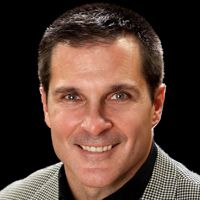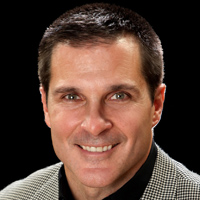5 Action Strategies for Financial Independence
Even those close to retirement can make a few simple moves to secure their futures. From HSAs to creative mortgage-payoff plans, every little bit helps.


If you are in the second half of your career and have a serious eye on being financially independent, there are five things I suggest you consider doing now.
1. Do what you can to be mortgage-free.
Retirees without a mortgage have it much easier than those who did not plan as well. If you have 25 years left on a 30-year mortgage and want to be financially independent or retired in 10 years, then refinance to a 10-year mortgage or add whatever is needed to be paid up in 10 years.
Another mortgage-payoff strategy that I love, but is seldom used, is to create a specific taxable investment account to accrue money in such a way that it would grow to a sum large enough to pay off your remaining mortgage balance in the year you desire. This way, you keep control over that money rather than giving it to the lender, and you maintain a larger interest deduction along the way. The key to this strategy is to have the money automatically saved from your checking account to your mortgage-payoff investment account. Without this automated discipline, the strategy could easily implode.
From just $107.88 $24.99 for Kiplinger Personal Finance
Become a smarter, better informed investor. Subscribe from just $107.88 $24.99, plus get up to 4 Special Issues

Sign up for Kiplinger’s Free Newsletters
Profit and prosper with the best of expert advice on investing, taxes, retirement, personal finance and more - straight to your e-mail.
Profit and prosper with the best of expert advice - straight to your e-mail.
2. Diversify away from your traditional work 401(k).
It usually makes sense to contribute to your 401(k) up to the match percentage, but for many people all of their retirement savings are locked into their 401(k)s or IRAs. The rude awakening for these people is that their account balances are not really all their money. There is a surrender change on the money they withdraw, and it’s called ordinary income tax. It’s whatever income tax rate the government happens to charge when you want your money out. Another potential pitfall to using a 401(k) as a retirement income stream is that Medicare premiums go up as your taxable income goes up. That’s like a tax to me if you pay a higher Medicare premium because your taxable income is higher.
The alternative is to fund AFTER-TAX accounts that generate tax-free or little taxable income. My favorite is the Roth 401(k) if your employer offers it. Your Roth 401(k) contribution is not tax-deductible, but the growth is tax-deferred, and when your contribution and the growth of the account are withdrawn it is income tax-free, as long as you’ve had the account for five years and are at least 59½. Love this. If your income qualifies, you can make a Roth IRA contribution as well and it works the same way.
One more idea is to forgo your traditional 401(k) and set up a tax-efficient investment portfolio with either ETFs, tax-efficient mutual funds or possibly individual stocks and municipal bonds. My point is not to tie up all your money in traditional IRAs and 401(k)s.
3. If you have a qualifying high-deductible medical insurance plan, you definitely should set up and maximum fund a health savings account.
Couples can put away $6,750 in 2017 (plus catch-up contributions of $1,000 more for those 55 and older) and it’s all federally income tax-deductible with no income restrictions. This account grows tax-deferred and the money comes out tax-free if used for qualified expenses. This is truly the best of all worlds. It can be used for Medicare premiums, doctor visits, prescriptions and much more. While this is true, I would not spend my savings from this account unless I absolutely had to. Why would I take money out of an account that has these amazing tax benefits if you could pull from savings and let this account grow?
4. Start planning for your legacy and chronic health care fund both at once right now.
The most efficient asset to leave your family is life insurance. The death benefit is income-tax free and delivered right when needed, guaranteed. I recommend using this vehicle (death benefit) as a permission slip to spend and enjoy the interest AND principal from your investment nest egg rather than preserving your principal until you are too old to enjoy it and figure out that you couldn’t spend it if you tried.
For example, a widowed client of mine wanted to leave her husband’s $400,000 401(k) to her two children. She refused to spend it despite the wishes of her children. To solve this issue, she bought a $400,000 life insurance policy in her 60s. She also takes an annual distribution of $6,000 to pay the premium. Now she is willing to take monthly withdrawals ($1,000/month) from that account knowing $400,000 will be passed on no matter what.
The life insurance you own at retirement frees you up to spend your investment money, not worrying about leaving it behind because the death benefit will fill that void. Ideally, you would construct the premiums to be paid off when you wanted to retire.
5. One of the biggest fears during retirement is the potential cost of chronic care in your old age.
There is a chronic care rider you can purchase with your life insurance that allows you, the insured, to take an advance on your death benefit while you are alive assuming you meet the chronic care rider criteria (usually that you cannot perform two of the six activities of daily living). Many policies let you take up to 4% of the death benefit per month (income tax-free) until you have taken out the entire death benefit. So a $200,000 policy would allow you to take up to $8,000/month. No receipts are needed, and you can spend the money any way you would like. Unlike long-term care insurance where it is “use it or lose it,” whatever you do not spend on chronic care will be passed on to the life insurance policy beneficiaries.
You can be financially independent without incorporating any of these strategies, but I believe strongly that you would be that much better off if you considered implementing each of these. Of course, these strategies are not for everyone and should be considered within the scope of each person’s financial situation.
Profit and prosper with the best of Kiplinger's advice on investing, taxes, retirement, personal finance and much more. Delivered daily. Enter your email in the box and click Sign Me Up.

Brad Rosley, CFP®, has been president of Fortune Financial Group (FFG) since 1996. FFG runs a virtual planning practice working with clients from all over the country. Rosley specializes in helping clients successfully navigate retirement related planning goals and construct investment portfolios to meet their personal life goals. His book "Beyond Money" made the Amazon best-seller list in the summer of 2018.
-
 Dow Adds 646 Points, Hits New Highs: Stock Market Today
Dow Adds 646 Points, Hits New Highs: Stock Market TodayIt was "boom" for the Dow but "bust" for the Nasdaq following a December Fed meeting that was less hawkish than expected.
-
 5 Types of Gifts the IRS Won’t Tax: Even If They’re Big
5 Types of Gifts the IRS Won’t Tax: Even If They’re BigGift Tax Several categories of gifts don’t count toward annual gift tax limits. Here's what you need to know.
-
 The 'Scrooge' Strategy: How to Turn Your Old Junk Into a Tax Deduction
The 'Scrooge' Strategy: How to Turn Your Old Junk Into a Tax DeductionTax Deductions We break down the IRS rules for non-cash charitable contributions. Plus, here's a handy checklist before you donate to charity this year.
-
 I'm a Tax Attorney: These Are the Year-End Tax Moves You Can't Afford to Miss
I'm a Tax Attorney: These Are the Year-End Tax Moves You Can't Afford to MissDon't miss out on this prime time to maximize contributions to your retirement accounts, do Roth conversions and capture investment gains.
-
 I'm an Investment Adviser: This Is the Tax Diversification Strategy You Need for Your Retirement Income
I'm an Investment Adviser: This Is the Tax Diversification Strategy You Need for Your Retirement IncomeSpreading savings across three "tax buckets" — pretax, Roth and taxable — can help give retirees the flexibility to control when and how much taxes they pay.
-
 Could an Annuity Be Your Retirement Safety Net? 4 Key Considerations
Could an Annuity Be Your Retirement Safety Net? 4 Key ConsiderationsMore people are considering annuities to achieve tax-deferred growth and guaranteed income, but deciding if they are right for you depends on these key factors.
-
 I'm a Financial Pro: Older Taxpayers Really Won't Want to Miss Out on This Hefty (Temporary) Tax Break
I'm a Financial Pro: Older Taxpayers Really Won't Want to Miss Out on This Hefty (Temporary) Tax BreakIf you're age 65 or older, you can claim a "bonus" tax deduction of up to $6,000 through 2028 that can be stacked on top of other deductions.
-
 Meet the World's Unluckiest — Not to Mention Entitled — Porch Pirate
Meet the World's Unluckiest — Not to Mention Entitled — Porch PirateThis teen swiped a booby-trapped package that showered him with glitter, and then he hurt his wrist while fleeing. This is why no lawyer will represent him.
-
 Smart Business: How Community Engagement Can Help Fuel Growth
Smart Business: How Community Engagement Can Help Fuel GrowthAs a financial professional, you can strengthen your brand while making a difference in your community. See how these pros turned community spirit into growth.
-
 In 2026, the Human Touch Will Be the Differentiator for Financial Advisers
In 2026, the Human Touch Will Be the Differentiator for Financial AdvisersAdvisers who leverage innovative technology to streamline tasks and combat a talent shortage can then prioritize the irreplaceable human touch and empathy.
-
 How Financial Advisers Can Deliver a True Family Office Experience
How Financial Advisers Can Deliver a True Family Office ExperienceThe family office model is no longer just for the ultra-wealthy. Advisory firms will need to ensure they have the talent and the tech to serve their clients.